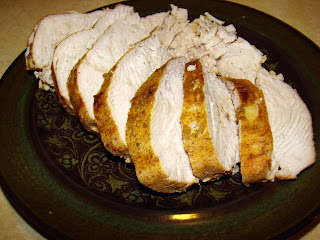
Remember the
birthday crown I posted in June? Well, now you can make them too. They're a good project for sewing beginners, and I'm sure more experienced fabric-crafters will be able to elaborate on their very basic design.
Materials:
- fabric for panel A (almost anything works, but I tend to avoid really silky fabrics and things that fray easily)
- fabric for panel B (I like corduroy or denim)
- fusible fleece interfacing (one side irons on)
- thread (I tend to use all-purpose for everything)
- Velcro (about a foot); I use sew-in for greater durability, but iron-on would be easier (whatever you do, DO NOT try and sew on self-adhesive Velcro)
Tools:
- iron
- sewing machine
- press cloth (large piece of colorfast cotton fabric)
- scissors
- tape measure/ruler
- straight pins
- crown template

Measure the future wearer's head circumference where the crown will rest. Toddlers (2-3) seem to measure around 18" circumference, so I make most of my young kid crowns adjustable from 18-23" to allow for growth. Ranger's crown adjusts from 19.5-25" because we're a big headed clan (and everybody wears the crown).
Using our
oh-so-technical paper crown template, you can plot out the starting and end points of your crown so it allows for user growth and/or a variety of noggins. I recommend adding about 5 inches past the user head circumference for good overlap and size adjustments.
After adjusting the template (cut off excess or tape on additional lengths) to your desired finished size (you'll add seam allowances later, so don't worry about that now).

Pin your finalized paper template (good side up) to the non-fusible side of the fusible fleece interfacing. Trace template outline, then remove template and cut fleece (or if you're feeling dangerous, just cut close to the template's edge).
Set the paper template aside. Place the fleece (fusible side down) on the
back of your thinner fabric (panel A). Make sure you allow 1/2" on all sides and that your fabric's design (if using a
one-direction fabric) is aligned with the crown's pointy top edge. Pin the fleece (fusible side down) to the wrong side (non-printed/back/ugliest side) of the panel A fabric.
Following the directions on your fusible fleece, iron the fleece to the panel A fabric. This will require an iron and a damp press cloth.

Once the fleece is fused to the back of the panel A fabric, mark a 1/2" seam allowance from each fleece edge and cut.
Lay the panel B fabric good side up on a flat surface. Place panel A face down (fleece side up; good side down) on top of panel B. Pin and trace, then cut out B to the same dimensions as A.
 Adding the Velcro:
Adding the Velcro:
Remove panel A from panel B. Place panel A face down (fleece up), and iron or pin back the 1/2" seam allowance on the
right and
bottom edges. Set panel A aside.
Place panel B face down. Iron or pin back the 1/2" seam allowance on the
right and
bottom edges of panel B. Set B aside.

With A facing up, place a 5" strip of Velcro (or whatever size you chose in the earlier measurements) against the left edge (not counting the ironed-back seam allowance) and 1/2" above the bottom edge of the crown (again, 1/2" not counting the seam allowance). Pin it in place. 1/2" above that strip, pin a parallel Velcro strip in place.
I tend to use the loop side Velcro on panel A and the hook side on panel B; just be sure to use the same type of Velcro (loop or hook) on a single panel. Mixing and matching just creates more work in the long run.Set panel A aside.

With B's good side facing up, align the other half of your Velcro strip to the left edge and 1/2" above the bottom fold. Pin in place. As before, add a second parallel strip of Velcro 1/2" above the first strip. Compare side-by-side with panel A for alignment.
Sew (or iron- depending on your Velcro) the strips in place. I tend to outline the pieces with a straight stitch first, then go around them once or twice with a zig-zag. This is where your crown is going to have the most stress applied in use, so make sure you've really stitched it down well.

When both panels have Velcro attached, you are ready to sew them together!

Pin with good sides facing each other. Mark a gap of about 6 inches (for turning) at the bottom center of the crown (I put two pins side by side to make these beginning and end points).

With fleece side up, sew a straight stitch outline around the edge of the fleece. If you're feeling fancy you can clip the curves and trim the corners of each point.
Through the bottom opening, turn the crown right side out. Using a pencil (eraser end) or chopstick, push out all the points and smooth the edges.

When you are satisfied with the crown's shape, pin the bottom opening shut and top stitch around the edge of the crown (closing the bottom opening along the way).
Now, pop that crown on your head and go look in the mirror. You look marvelous!
I would love to see your completed crowns in photos and/or links!P.S. Ali, thanks for stalking me (in a good way) on this. I needed the inspiration to get through my difficulties with making my paper pattern into a working pdf.
Toddler-friendly ornaments- decorations your kid can really play with.
















































